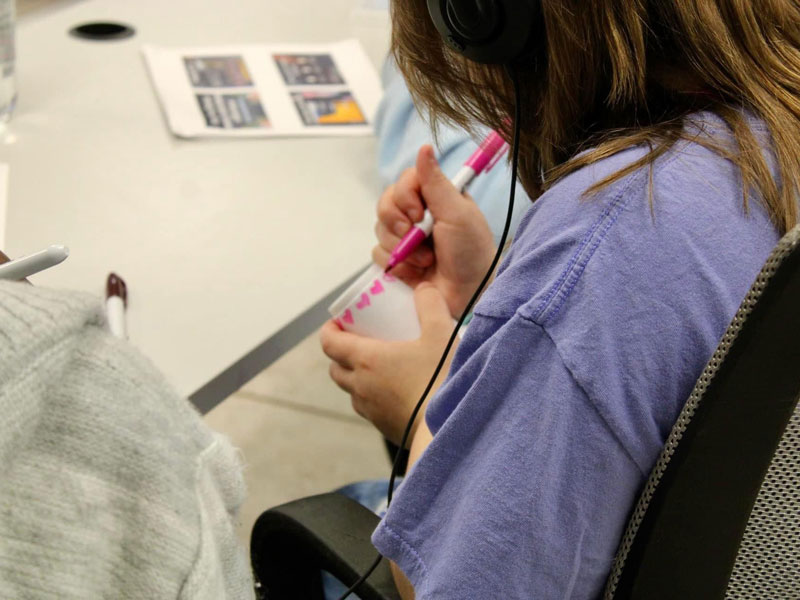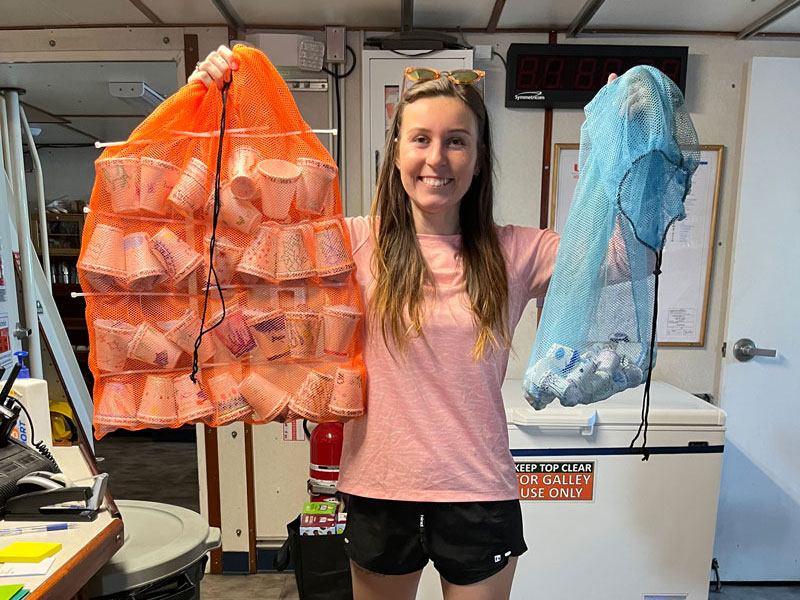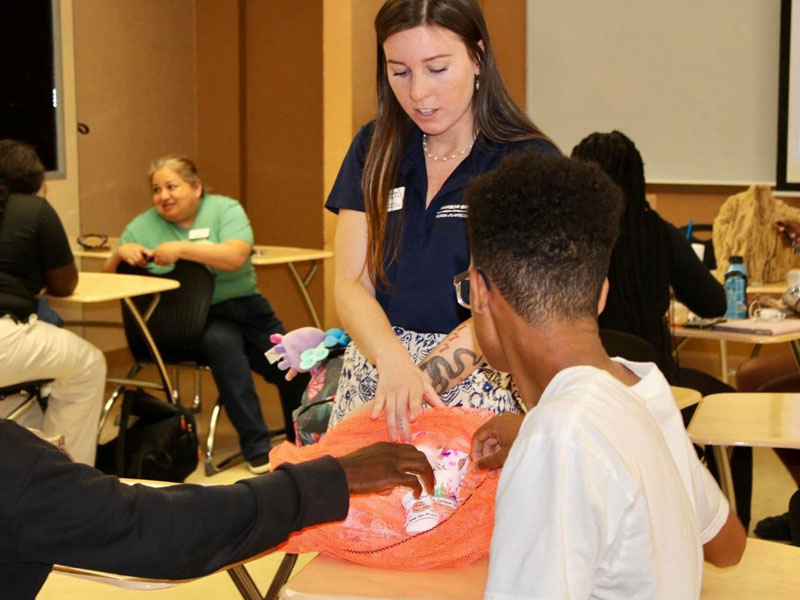Exploration of Deepwater Habitats off Puerto Rico and the U.S. Virgin Islands for Biotechnology Potential
Using Shrunken Styrofoam Cups for Outreach
On all Harbor Branch Oceanographic Institute expeditions to date, the teams have spent quiet evenings on the ship decorating Styrofoam cups to send down to the bottom of the ocean via remotely operated vehicles (ROVs). The intense ocean pressure causes the cups to compress, resulting in keepsakes that commemorate each experience. This activity has been a tradition among deep-sea explorers for decades. Given that it’s something fun that has a tangible outcome, we thought it would make a great outreach project. And we were right!


I am an outreach and marine education specialist at Florida Atlantic University’s Harbor Branch Oceanographic Institute (HBOI), and in association with this expedition, I have educated over 100 teens from the Boys & Girls Clubs of St. Lucie County about the importance of ocean exploration and biomedical research. During my visits, I also invited them to video record questions for the expedition team. And, while they brainstormed questions, they decorated Styrofoam cups — creating their very own deep-sea souvenirs.
The teens were very interested in the ROV and how it operates, as well as life at sea and how deep-sea creatures can be used for human medicine. Given the opportunity to ask ANYONE on the expedition ANYTHING, they came up with some very creative, interesting, and fun questions. But nothing excited them as much as learning that their cups would be returned to them after shrinking.
During the expedition, the team provided answers to the teens’ nearly 50 questions and shrunk their cups. Everyone on the team was so pleased to see the teens’ beautiful creations — although the captain was puzzled initially and wondered when we found the time to make so many!


My experience working with the teens from the Boys & Girls Clubs of St. Lucie County has been very pleasant and rewarding. While at sea, I looked forward to future sessions with them, when I could introduce them to other HBOI scientists, tell them all about the expedition, share the answers to their questions, and more importantly, give them their cups!
Building and maintaining this collection is essential to expanding our understanding of sponges in the natural world, both now and for future research. By storing and safeguarding this material from a wide range of species, we can study a sponge’s marine natural products, resilience to global changes, relationship to other organisms and the environment, and more.
By Courtney Brooks, Harbor Branch Oceanographic Institute, Florida Atlantic University
Published October 3, 2024